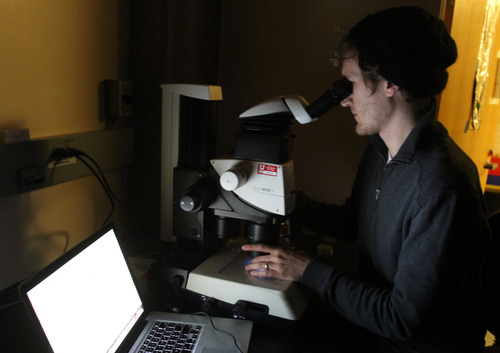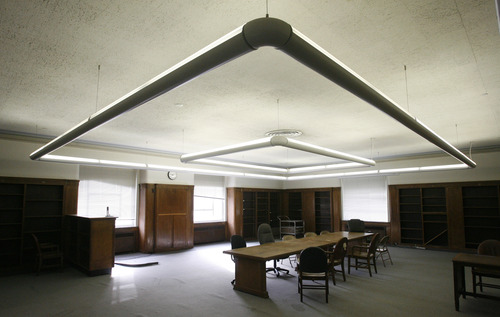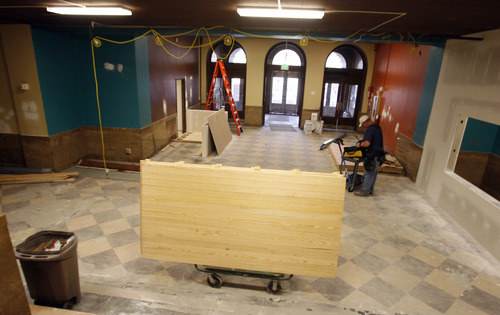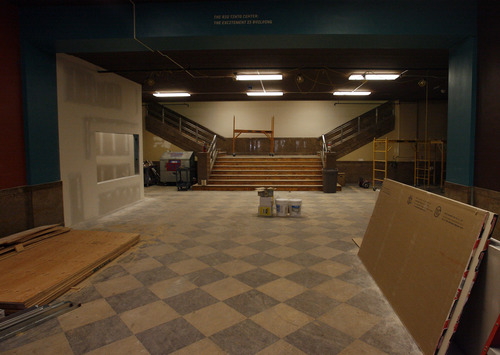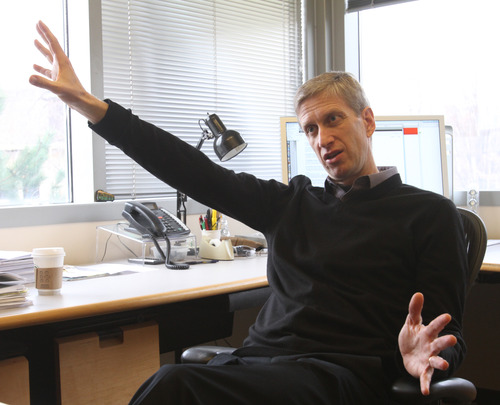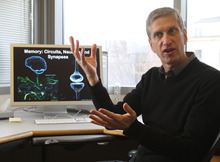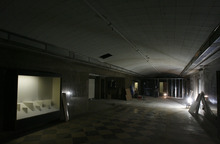This is an archived article that was published on sltrib.com in 2012, and information in the article may be outdated. It is provided only for personal research purposes and may not be reprinted.
At the planned new home for the Center for Cell and Genome Science, University of Utah researchers and students from biology, chemistry, physics, math and engineering will join forces to explore the mysteries of the ubiquitous cell.
Cells are an essential element of the human body that are simultaneously basic and almost impossibly complex. Each cell is a miniscule, precise universe unto itself — one that scientists don't fully understand.
The first $50 million phase of a makeover for the U.'s George Thomas building is slated to transform the former natural history museum into a home for cutting-edge cell research and a hub for the College of Science. Most of the stately 1933 building's vaulted ceilings and art-deco details will be preserved — only a portion of the building now supported by the stacks of bookshelves is slated to be torn down and rebuilt.
The design adds high-tech classrooms, lab space, sleek glass walls and about 20 percent more space, for a total of 120,000 square feet.
"We could set a new standard for the country," said Andres Villu Maricq, director of the Center for Cell and Genome Science.
Once estimated to cost $75 million and open in 2014, the project has been pushed back and the remodel broken into two phases due to "the realities of raising money," according to U. Science Dean Pierre Sokolsky. Administrators plan to ask the Utah Legislature for $30 million in state funding for the project during the legislative session in 2014; the other $20 million for the first phase of the remodel will come from private donations.
If the Legislature approves the public funding request, construction is expected to be completed in late 2016. There's no cost estimate yet on the second phase, but the total price tag is expected to come in "significantly less" than the original $75 million estimate, Sokolsky said.
Empty since the Utah Museum of Natural History moved late last year to its new home at 301 Wakara Way, the building constructed as the U.'s first co-ed library at 1430 E. President's Circle will temporarily host a dance studio before its full transformation.
—
'Spark something' • One challenge for cell research until recently has been the lack of instruments sensitive enough to make the interior of the cell visible. Traditional optical microscopes aren't powerful enough, and super-sensitive electron microscopes can only magnify dead biological material.
Enter super-resolution microscopy, which uses computers to analyze light and magnify living cells so that scientists can see the fine structures inside for the first time.
"One way to think about cells is they're like Costco warehouses. You have to take the roof off to figure out what's going on," Maricq said.
The U.'s super-resolution microscope is one of a handful in the world, he said.
Like a packed building, there are many activities going on at once in cells, using different tools along varied pathways. That, Maricq said, is why it's important to involve experts from different disciplines to understand how it all works.
"The problem we have now is biologists look at how the cell functions and they can't really figure it out on their own," Sokolsky said. At the U., "we don't have right now a place where a physics student can meet a chemistry student and have a chat, spark something."
Physics can help explore how viruses get out of a cell and spread, while chemistry can explain how some substances permeate the cell membrane and others don't.
"If you don't understand that, you can have the most powerful drug in the world and it can't get in there," Sokolsky said, describing one of the applications of cell research.
—
At the edge • The major donor to the project so far is Gary Crocker, chairman of Merrimack Pharmaceuticals and president of science investment firm Crocker Ventures. In 2010, he and his wife, Ann, gave $10 million to the building that will one day bear their names.
When U. administrators presented their plans to the State Building Board, they asked Crocker to speak on the practical economic applications of the research for Utah.
He told the board, " 'My name is Gary Crocker and I'm a job creator,' " said Sokolsky. "The whole atmosphere of the room just changed."
Michael Jensen, who recently earned his doctorate, said he hopes the new building and research can attract great minds from around the country.
"I think its most advantageous aspect is to attract people from diverse education backgrounds," he said, sitting next to a microscope displaying creatures he generated in a lab: tiny worms born with a gene that makes their nervous systems glow red under a black light.
Under the lens of a microscope, the organized flurry of light in the worms' bodies looks like images of cities seen from airplanes at night, each streak a neuron webbing through the worm's body.
On another floor, undergraduate Jackson Richards had an image of a cell, magnified to illustrate its internal machinery, open in Photoshop on his computer.
Scientific advances, he said, bring new knowledge but also new questions. "It's really cool to be at that edge," he said.
Twitter: @lwhitehurst


